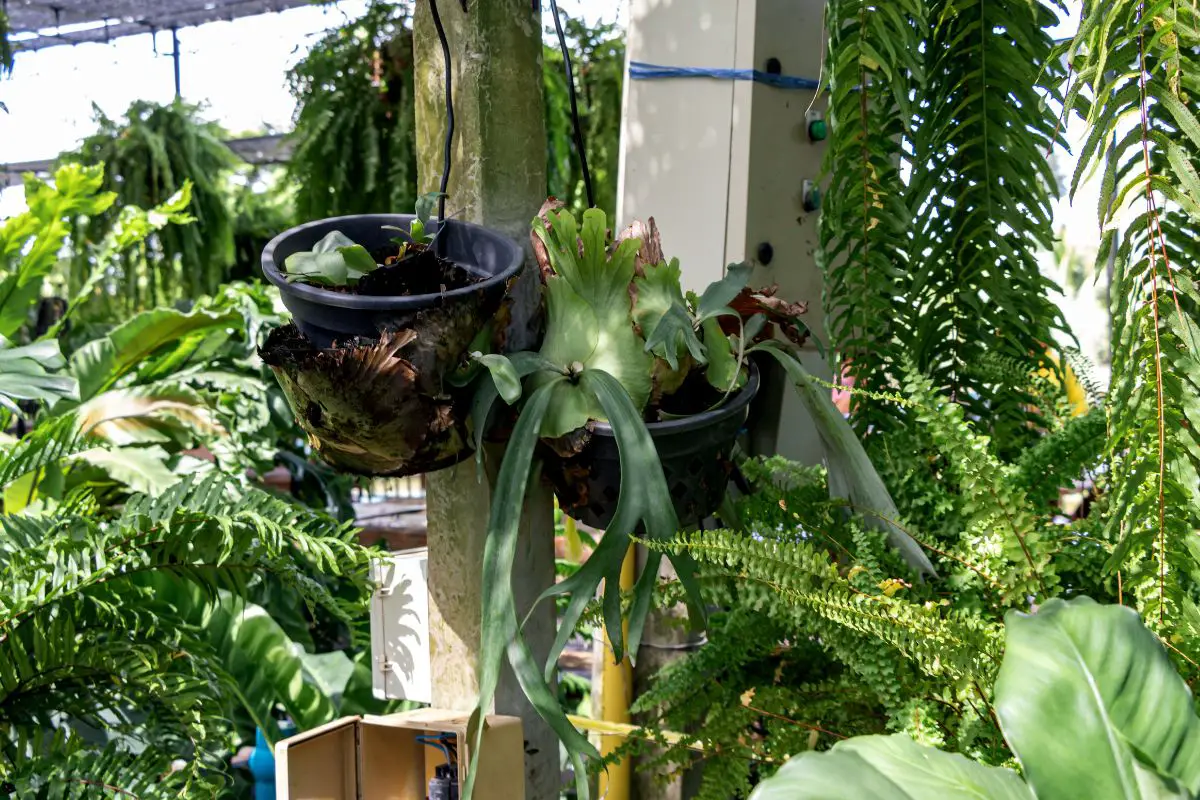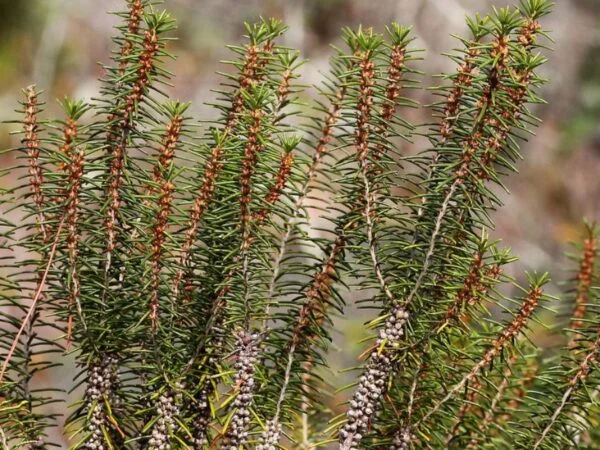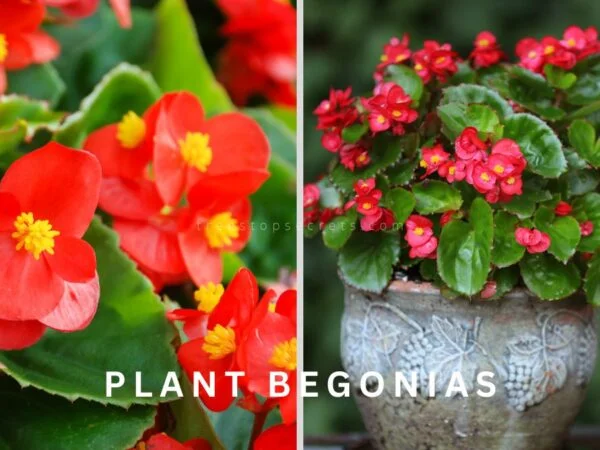Ever thought about bringing the lush charm of indoor plants inside your house? You can add a touch of nature to any room with their green fronds. Cultivating staghorn ferns with green fronds, fertile fronds, sterile fronds, and foliar fronds might just be the way to go. The unique elkhorn fern and staghorn fern species, with their antler-like fronds, can transform any room into a green oasis with proper pot and staghorn fern care. Nurturing these fascinating ferns indoors is not only rewarding but also surprisingly simple. The process involves caring for both the fertile fronds and sterile fronds of the species, as well as tending to the basal fronds. Imagine having a pot of fertile fronds in your living space all year round, creating a tropical wall with different species!
Cultivating staghorn ferns at home offers numerous benefits, from purifying the air to adding a touch of natural elegance. These ferns are known for their striking basal fronds and can be grown in a pot. There are various species of staghorn ferns that you can choose from to cultivate at home. With just a bit of time and care, you can create a captivating display of the staghorn fern species that will leave everyone green with envy. Are you ready to bring some vibrant greenery into your living space with staghorn fern care? This species can thrive indoors with proper care. Let's delve into the wonderful world of growing staghorn ferns indoors.
Staghorn Fern Care Overview
Understanding Anatomy
Staghorn ferns have a unique anatomy that sets them apart from other plants. Staghorn fern care includes two distinct leaf types: the sterile, flat, round leaves that anchor the plant to its host and the fertile, antler-like fronds that produce spores for reproduction. The basal fronds are crucial for staghorn fern care, as they absorb water and nutrients, while the shield fronds protect and support the plant.
Epiphytic Nature
Staghorn ferns naturally thrive in an epiphytic habitat, where they grow on tree trunks or branches without being parasitic. This epiphytic nature allows the staghorn fern to obtain moisture and nutrients from the air and rainwater, rather than relying on soil. Their ability to adapt to this lifestyle makes staghorn ferns fascinating additions to indoor spaces.
Different Types
There are various types to consider. Some popular staghorn fern varieties include Platycerium bifurcatum, which is known for its striking appearance with deeply lobed fronds, and Platycerium superbum, recognized for its large size and impressive presence. Choosing the right type of fern, such as a staghorn fern, depends on factors such as available space, light conditions, and desired aesthetic appeal.
Ideal Indoor Conditions
Light Requirements
Staghorn ferns thrive in bright, indirect light. Natural light is crucial for the growth of staghorn ferns as it provides essential energy for photosynthesis. When cultivating staghorn ferns indoors, finding the best natural light conditions is imperative. Place the staghorn fern near east or west-facing windows to ensure they receive adequate but not direct sunlight.
Supplementing natural light with artificial lighting can be beneficial, especially for growing staghorn fern in spaces with limited sunlight exposure. LED grow lights are an excellent choice for indoor staghorn ferns as they emit the right spectrum of light for optimal growth. Ensuring that the artificial light source remains on for 6-8 hours daily can mimic natural daylight and support healthy development of staghorn fern.
Temperature Maintenance
Maintaining ideal temperatures between 60°F to 80°F (15°C to 27°C) is vital for the well-being of indoor staghorn ferns. These staghorn fern plants are sensitive to extreme temperature fluctuations, so it's crucial to keep them away from drafts or heating vents. Understanding the temperature requirements of the staghorn fern and providing a consistent environment will promote healthy growth and prevent stress on the plant.
Optimal Humidity
Indoor staghorn ferns require high humidity levels similar to their natural tropical habitat. To provide optimal humidity for staghorn fern, consider using a humidifier in the vicinity of these plants, especially during drier seasons or in arid climates. Misting the fronds of the staghorn fern regularly with water can also help maintain suitable humidity levels around the plant, ensuring they receive the moisture necessary for thriving growth.
Planting and Soil Tips
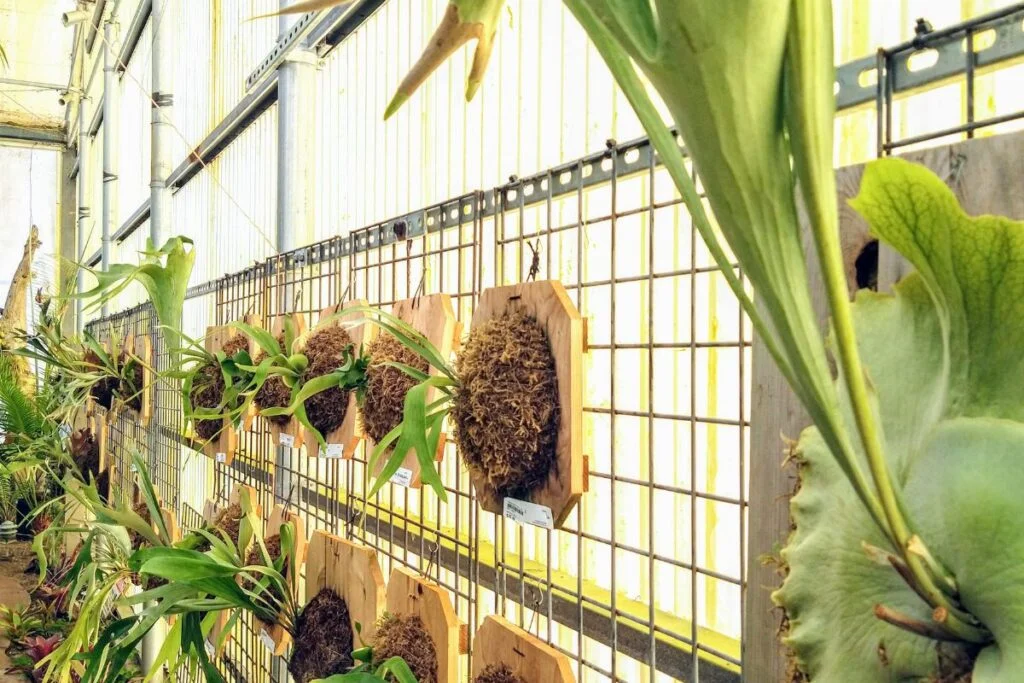
Soil Requirements
Staghorn ferns have specific soil needs that are crucial for their successful growth indoors. These unique staghorn fern plants thrive in well-draining soil that mimics their natural epiphytic habitat. This means the soil for a staghorn fern should be airy and allow excess water to pass through, preventing waterlogged conditions that can lead to root rot. When selecting a soil mix for indoor staghorn ferns, it's essential to choose one specifically designed for epiphytic plants or orchids. These mixes typically consist of materials like fir bark, sphagnum moss, perlite, charcoal, and staghorn fern, creating an ideal environment for the roots to establish and grow.
Mounting Techniques
There are several methods to consider for mounting a staghorn fern based on personal preference and the available surfaces. One popular technique for staghorn ferns is mounting them on wooden boards or plaques using sturdy wire or monofilament line. Another method involves placing the staghorn fern's root ball into a basket lined with sphagnum moss before securing it to a vertical surface. For those seeking a more creative display, attaching staghorn ferns onto decorative driftwood or cork bark can add an artistic touch to indoor spaces while providing a suitable growing environment for the plants.
Watering and Feeding
Watering Techniques
Proper watering is crucial for the health of indoor staghorn ferns. These unique plants require a balance. Overwatering the staghorn fern can lead to root rot, while underwatering may cause the plant to dry out. To maintain optimal moisture levels for your staghorn fern, consider using a well-draining potting mix and allowing excess water to escape from the container's drainage holes. It's essential to monitor the top layer of soil for dryness before watering again, especially for ferns.
Understanding the specific watering needs and frequency for healthy staghorn ferns is key to their thriving growth indoors. Typically, indoor staghorns and ferns benefit from regular but moderate watering sessions. This involves providing enough water to moisten the entire root system without leaving the plant sitting in standing water. As a general rule, it's advisable to water when the top inch of soil feels slightly dry to the touch, ensuring that you do not let the soil completely dry out between watering sessions.
Maintaining proper moisture levels when watering indoor staghorn ferns can be achieved through various techniques such as misting or soaking. Misting with a spray bottle allows for targeted hydration and helps simulate their natural humid environment. Alternatively, soaking the entire root ball in a basin of water for around 10-20 minutes can effectively ensure thorough hydration.
Fertilizing Schedule
Establishing a consistent fertilizing schedule is essential in providing adequate nutrients for indoor staghorn ferns' growth and development. A balanced fertilizer with an N-P-K ratio (nitrogen-phosphorus-potassium) of 1:1:1 or 1:2:2 is often recommended for these plants. It's important to dilute the fertilizer according to package instructions as applying undiluted fertilizer can harm the sensitive roots of staghorns.
Selecting suitable fertilizers and application methods is vital in promoting thriving staghorns indoors. Organic options like fish emulsion or seaweed-based fertilizers are excellent choices due to their gentle nature and ability to provide beneficial micronutrients along with macronutrients. When applying fertilizer, it's best practice to distribute it evenly across the surface of the potting mix without direct contact with the plant itself.
Promoting healthy development through a consistent fertilizing routine involves feeding indoor staghorn ferns every 4-6 weeks during their active growing season, typically spring through early fall. However, it's crucial not to over-fertilize as this can lead to salt buildup in the soil which may damage your plant over time.
Propagation Insights
Propagation Methods
Exploring Effective Propagation Techniques for Indoor Staghorns
There are several effective methods to consider. One popular method is division, where you carefully separate the offsets or pups from the main plant. This can be done during repotting when you notice new growth emerging from the base of the plant. Once separated, these offsets can be potted individually to grow into new plants.
Another successful propagation method involves spore propagation. This method requires patience as it involves sowing spores onto a suitable growing medium and providing optimal conditions for germination. While this method may take longer than division, it can be a rewarding way to propagate staghorn ferns and observe their growth from spore to mature plant.
Steps to Successfully Propagate New Plants from Existing Indoor Staghorns
To propagate new plants from existing indoor staghorns using the division method, start by gently removing the offsets or pups from the main plant. Ensure that each offset has some roots attached. Then, pot each offset in a suitable growing medium such as a mix of peat moss and perlite. Keep the newly potted offsets in a warm, humid environment with indirect light while they establish themselves.
For spore propagation, begin by collecting mature sporangia (spore-bearing structures) from the underside of fertile fronds on the parent plant. Sprinkle these sporangia onto a clean, moist growing medium such as sphagnum moss within a shallow container. Cover the container with plastic wrap to create a humid environment and place it in an area with indirect light and consistent warmth.
Tips for Ensuring Successful Propagation of Indoor Staghorns
To ensure successful propagation of indoor staghorns, maintaining optimal environmental conditions is crucial. Provide adequate humidity by misting or using a humidifier, especially during the initial stages of propagation when young plants are establishing roots or germinating from spores.
Regular monitoring is essential to check for signs of growth and adjust care practices accordingly. For divided offsets, ensure that they receive appropriate watering without over-saturating the soil. When propagating through spores, maintain consistent moisture levels in the growing medium while avoiding waterlogging.
Lastly, patience is key when propagating staghorn ferns indoors. It's important to allow sufficient time for new plants to establish themselves and show signs of healthy growth before expecting significant progress.
Caring for Mounted Ferns
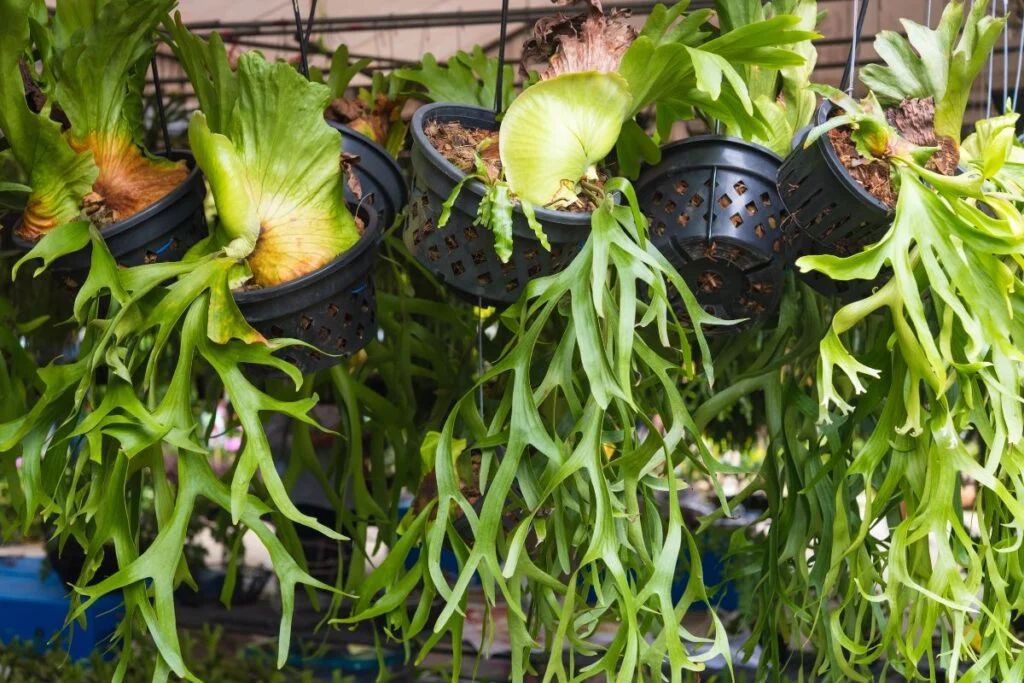
Remounting Process
Knowing when and how to remount indoor staghorns is essential for their continued health and vitality. As these plants mature, their original mounts may become crowded or unable to support further growth. To ensure the well-being of the staghorn fern, it's crucial to periodically refresh and relocate matured indoor stag horns onto new mounts. This process involves carefully detaching the plant from its current mount, inspecting its root system for any signs of overcrowding or decay, and then securing it onto a new mount with fresh growing medium. By executing this remounting process effectively, you provide ample space for the fern's roots to expand and absorb nutrients, thereby supporting continued growth.
Growth Management
Managing the size and spread of indoor stag horn plants is vital to prevent them from outgrowing their designated space. Regular pruning and shaping are indispensable strategies in maintaining desired growth patterns while preventing an overabundance of foliage. When tending to staghorn ferns indoors, it's important to trim any sterile fronds that have turned brown or yellow as they no longer contribute to the plant's vitality. Controlling the number of fertile fronds can help regulate growth and maintain an aesthetically pleasing appearance within your living space. By implementing these pruning techniques along with providing adequate light and water, you can support healthy and controlled growth in your indoor stag horn plants.
Pests and Diseases
Common Pests
Identifying common pests that can affect indoor stag horn plants is crucial for their well-being. Some common pests include mealybugs, scale insects, and spider mites. Mealybugs appear as white cottony masses on the plant, while scale insects look like small brown or white bumps along the fronds. Spider mites are tiny and may create fine webbing on the plant.
To effectively manage these pests and protect indoor stag horn plants, consider using natural remedies like neem oil or insecticidal soap. These options are gentle on the plants while effectively controlling pest infestations. Regularly inspecting the plants for any signs of pests and promptly addressing any issues can prevent severe damage to the ferns.
Preventative measures against common pests in indoor stag horn cultivation involve maintaining proper humidity levels and ensuring good air circulation around the plants. By keeping the environment less favorable for pests, such as by avoiding overcrowding of plants and periodically cleaning the leaves, you can significantly reduce the risk of infestations.
Disease Identification
Recognizing signs of diseases in indoor stag horn plants is essential for their overall health. Symptoms of diseases may include wilting fronds, unusual spots or discoloration on leaves, or stunted growth. Understanding these signs can help in early disease detection and management.
Common diseases that can impact stag horn plants grown indoors include fungal infections such as leaf spot and root rot. Leaf spot presents as dark lesions on the fronds, while root rot causes decay in the roots due to excessive moisture levels. Taking prompt action upon identifying diseases in indoor stag horn plants is crucial to prevent further spread within your plant collection.
Upon identifying signs of disease, it's important to isolate affected plants to prevent spreading to healthy ones. For fungal infections like leaf spot, applying a fungicidal spray formulated for ferns can help combat the spread of the disease without harming the plant. In cases of root rot, adjusting watering practices to allow better drainage and repotting into fresh soil may aid in recovery.
Troubleshooting Indoor Growth Issues
Problem Identification
Identifying potential issues affecting the health of indoor stag horn plants is crucial for their optimal growth. Common problems encountered when growing stag horn plants indoors include inadequate light, improper watering, and unsuitable humidity levels. These factors can lead to stunted growth, yellowing fronds, or even pest infestations. Addressing these challenges promptly is vital to ensure the well-being of your indoor stag horn plants.
Expert Solutions
Seeking expert advice and solutions for specific challenges in growing stag horn plants indoors can significantly enhance their overall health and vitality. Accessing professional guidance on optimizing conditions and care practices for indoor stag horn cultivation can be invaluable. Expert insights can provide tailored recommendations for addressing issues such as adjusting light exposure, modifying watering frequency, or implementing humidity-boosting techniques. Leveraging expert advice can help overcome hurdles and foster success in growing healthy staghorn ferns indoors.
Pets and Plant Compatibility
Safety Tips
Prioritizing safety measures when caring for stag horn plants indoors is crucial to prevent any potential harm to both the plant and yourself. Staghorn ferns, like many houseplants, can be toxic to pets if ingested. Therefore, it's essential to place them in areas inaccessible to curious pets. Consider using hanging baskets or elevated stands to keep the plants out of reach.
Ensuring safe handling practices while tending to indoor staghorn plants is vital for preventing accidental injuries. The antler-like fronds of staghorn ferns can be sharp, so wearing gardening gloves when handling them can protect your hands from scratches or cuts. Moreover, using proper tools such as pruning shears with safety locks can help minimize the risk of accidents during maintenance tasks.
Creating a secure environment for both plant care and personal well-being when growing staghorn plants indoors involves taking precautions against potential hazards. When mounting staghorn ferns on walls or other surfaces, ensure that the fixtures are securely installed to prevent accidents caused by falling plants. Be mindful of the weight-bearing capacity of the chosen location to avoid any structural issues due to the plant's weight over time.
Conclusion
You've now got the inside scoop on growing staghorn ferns indoors. From creating the perfect environment to dealing with pests and diseases, you're equipped to be a top-notch staghorn fern parent. Now it's time to get your hands dirty and put these tips into action. Remember, just like any new skill, it might take some trial and error, but don't give up! Your fern babies will thank you for the effort with their stunning, flourishing presence in your home.
So, grab your gardening gloves and let's dive into this green adventure together! Happy planting!
Frequently Asked Questions
Can I grow staghorn ferns indoors all year round?
Yes, you can grow staghorn ferns indoors throughout the year, as long as you provide them with the right conditions such as indirect light, high humidity, and proper watering.
What type of soil is best for growing staghorn ferns indoors?
A well-draining potting mix that consists of materials like peat moss, pine bark, and perlite is ideal for growing staghorn ferns indoors. This type of soil mimics their natural epiphytic habitat.
How often should I water my indoor staghorn fern?
Water your indoor staghorn fern when the top layer of the soil feels dry to the touch. Typically, this means watering every 1-2 weeks. However, it's important to adjust based on your specific indoor conditions.
Can I propagate a staghorn fern at home?
Yes, you can propagate a staghorn fern at home through division or spore propagation. Division involves separating pups from the mother plant while spore propagation requires more specialized care.
Are there any common pests or diseases that affect indoor staghorn ferns?
Indoor staghorn ferns are susceptible to pests like scale insects and mealybugs. They may be prone to fungal diseases if overwatered or placed in excessively humid conditions. Regular inspection and proper care can help prevent these issues.
Image Source: Paid image from CANVA

